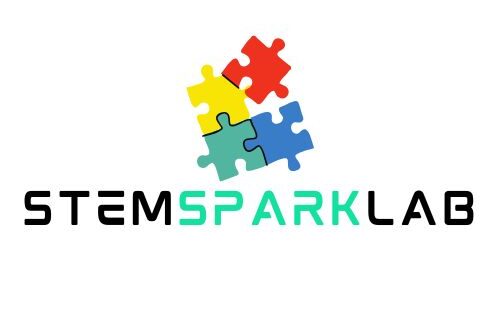30-Day STEM Challenge For Kids (Educational & Fun!)
We may earn a commission for purchases made using our links. Please see our disclosure to learn more.
Have you ever noticed how kids light up when they discover something new—whether it’s making slime bubble, a paper rocket soar, or coding their first little game? That spark of curiosity is what STEM (Science, Technology, Engineering, and Math) is all about. But here’s the struggle: how do you consistently keep that excitement alive without running out of ideas?vThat’s where a 30-Day STEM Challenge swoops in. It’s a simple, structured, yet incredibly fun way to give your child (or students) daily activities that build creativity, problem-solving, and hands-on learning—all while sneaking in some serious educational value.
In this guide, I’ll walk you through:
- A complete 30-day breakdown of STEM challenge ideas
- Affordable tools and kits from Amazon that make it easier
- How to adapt activities for different ages and learning styles
- Research-backed benefits of STEM learning
- A comparison of top products to get you started
Let’s dive in, because trust me—this 30-day adventure might just ignite a lifelong love of learning.
Why a STEM Challenge Works
Think of it like a fitness plan, but for the brain. Just as daily workouts build strength, daily challenges strengthen creativity, logic, and resilience. Kids thrive on routine and novelty—two things this challenge balances perfectly.
Day 1: Build a Marshmallow Tower
Kids love snacks—and marshmallows aren’t just tasty, they’re the perfect building block. Hand your child a pile of marshmallows and some toothpicks, then challenge them: “Can you build the tallest tower without it collapsing?”
- STEM Skills: Engineering, structural balance, problem-solving.
- Twist: Add a timer to create a sense of urgency or compare towers between siblings.
- Reflection Question: What made the tower stronger—wider base or taller height?
Day 2: Paper Airplane Physics
Grab some printer paper and test different airplane folds. Encourage kids to predict which design will go farther before tossing.
- STEM Skills: Aerodynamics, hypothesis testing.
- Twist: Create a “runway” with masking tape on the floor and measure distance.
- Anecdote: I once watched two siblings turn this into a friendly competition, then collaborate to design a hybrid “super plane.” That’s teamwork in action.
Day 3: LEGO Bridge Strength Test
Pull out the LEGO bin and say: “Build a bridge that holds as many toy cars as possible.”
- STEM Skills: Structural engineering, weight distribution.
- Twist: Introduce “materials budget”—only allow 50 bricks, teaching resource management.
- Mini-Challenge: Which design holds the most before collapsing?
Day 4: DIY Lava Lamp
With oil, water, food coloring, and an effervescent tablet, kids can create their own bubbling lava lamp.
- STEM Skills: Chemistry, density, solubility.
- Reflection Question: Why doesn’t oil mix with water?
- Cultural Angle: Kids in different cultures can swap the food coloring for traditional colors from their festivals (e.g., green for Eid, red for Lunar New Year).
Day 5: Coding Mini-Challenge
Introduce kids to coding with Scratch or Code.org. Goal: create a 10-second animation or make a character move.
- STEM Skills: Logic, sequencing, computational thinking.
- Analogy: Coding is like writing a recipe—if you skip a step, the cake won’t bake right.
- Tip: Younger kids can start with drag-and-drop coding, while older ones can dip into Python or JavaScript basics.

Day 6: Balloon-Powered Car
A balloon taped to a straw, with wheels attached to a cardboard base, turns into a fun science experiment.
- STEM Skills: Newton’s Third Law of Motion.
- Reflection Question: Why does air escaping from the balloon push the car forward?
- Twist: Race multiple cars and measure whose design goes farthest.
Day 7: Recycled Robot
Cardboard boxes, bottle caps, and old buttons suddenly become parts for a DIY robot.
- STEM Skills: Creativity, design thinking, environmental awareness.
- Mini-Challenge: Make the robot do a “job”—like holding pencils.
- Storytelling Angle: Have kids name their robot and explain its “superpower.”
Day 8: Mystery Bag STEM
Place random items (spoon, rubber band, cup, tape) in a bag. Challenge kids to invent something useful.
- STEM Skills: Innovation, improvisation.
- Reflection Question: What everyday problem does your invention solve?
- Analogy: It’s like “STEM MasterChef”—use whatever’s in the basket!
Day 9: Egg Drop Test
The classic experiment: protect an egg from a tall fall.
- STEM Skills: Physics, energy absorption, materials science.
- Twist: Try dropping from different heights.
- Emotional Hook: The suspense of opening the parachute or box to see if the egg survived always keeps kids giggling (or groaning).
Day 10: Solar Oven S’mores
Turn a pizza box into a solar oven with foil, plastic wrap, and sunlight. Melt chocolate and marshmallows for real, edible s’mores.
- STEM Skills: Renewable energy, greenhouse effect.
- Mini-Challenge: Which melts faster—dark chocolate or milk chocolate?
Day 11: Homemade Slime Chemistry
Mix glue, baking soda, and contact solution for gooey fun.
- STEM Skills: Chemistry of polymers.
- Reflection Question: Why does slime stretch but still snap?
- Tip: Experiment with textures—fluffy slime with shaving cream, or glitter slime for sparkle.
Day 12: Straw Roller Coaster
Using straws and tape, design tracks for marbles.
- STEM Skills: Gravity, kinetic energy.
- Mini-Challenge: Can you make a loop-de-loop?
- Twist: Use cardboard boxes to elevate sections like a real amusement park.
Day 13: Ice Excavation
Freeze toys in ice blocks. Let kids figure out ways to “rescue” them.
- STEM Skills: States of matter, melting, problem-solving.
- Options: Use warm water, salt, or even small tools.
- Anecdote: One child I worked with called it “dinosaur rescue”—and suddenly science became storytelling.
Day 14: Water Filtration System
Coffee filters, sand, gravel, and a bottle cut in half turn into a DIY water filter.
- STEM Skills: Environmental science, water cycles.
- Reflection Question: Why is filtration important in real life?
- Global Perspective: Connect it to how clean water access is a challenge in many countries.
Day 15: Rubber Band Guitar
Shoebox + rubber bands stretched at different lengths = music lesson meets science.
- STEM Skills: Sound waves, vibrations.
- Twist: Experiment with thickness of rubber bands to hear pitch changes.
Day 16: DIY Compass
Rub a needle with a magnet, float it on cork in water, and watch it find north.
- STEM Skills: Magnetism, Earth’s magnetic field.
- Cultural Note: Explore how ancient explorers used simple tools like this to navigate seas.
Day 17: Catapult Launch
Craft a catapult with popsicle sticks, rubber bands, and a spoon.
- STEM Skills: Angles, force, trajectory.
- Challenge: Whose marshmallow or pom-pom goes the farthest?
- Twist: Set up “targets” and keep score.
Day 18: Shadow Art
Shine a flashlight on toys to create shadows, then trace them on paper.
- STEM Skills: Light properties, angles.
- Creative Add-On: Color in the shadows for an art-science crossover.
Day 19: Build a Zip Line
String, hanger, and cup = a zip line for action figures.
- STEM Skills: Gravity, tension, friction.
- Mini-Challenge: Adjust slope for faster vs. slower rides.
Day 20: Plant Growth Science
Plant two identical seeds—water one daily, ignore the other. Track results.
- STEM Skills: Biology, experimentation.
- Tip: Use a journal to log daily changes with drawings.
Day 21: Magnetic Maze
Draw a maze on cardboard. Move a paperclip using a magnet from below.
- STEM Skills: Magnetism, problem-solving.
- Twist: Time each other—who escapes fastest?
Day 22: Domino Chain Reactions
Design an elaborate domino effect track.
- STEM Skills: Cause and effect, energy transfer.
- Creative Angle: Use toy cars or balls for added obstacles.
Day 23: DIY Periscope
Cardboard tube + small mirrors = secret spy tool.
- STEM Skills: Reflection, light paths.
- Cultural Note: Talk about how submarines use periscopes.
Day 24: Floating vs. Sinking
Fill a tub with water and test various items.
- STEM Skills: Density, buoyancy.
- Mini-Challenge: Predict first, test second. Were you right?
Day 25: Homemade Parachute
Tie a toy to strings and attach to a plastic bag. Drop it from a height.
- STEM Skills: Air resistance, gravity.
- Challenge: Whose parachute lands softest?
Day 26: Wind Power Pinwheel
Create a pinwheel with paper and straws, then place it near a fan.
- STEM Skills: Renewable energy, force of wind.
- Reflection Question: How could this principle be scaled for real wind turbines?
Day 27: Build a Coding Bracelet
Use two colors of beads to represent binary code. Spell a name or word.
- STEM Skills: Binary systems, data representation.
- Cultural Note: Kids can make bracelets for friends, linking STEM with creativity and connection.

Day 28: Density Rainbow
Mix sugar water solutions of different concentrations and layer them.
- STEM Skills: Density, solutions.
- Visual Payoff: A rainbow in a glass that looks like magic but is pure science.
Day 29: STEM Storytelling
Ask kids to create a short story where characters solve a problem using STEM.
- STEM Skills: Creative writing, problem-solving.
- Mini-Challenge: Can their story include at least one concept learned this month?
Day 30: Family STEM Showcase
Host a mini “science fair” at home. Kids present their favorite project and what they learned.
- STEM Skills: Communication, presentation, reflection.
- Tip: Record videos for memories—and to show progress over time.
Recommended Amazon STEM Products
Here are tools that make this challenge easier (and more fun).
1. NATIONAL GEOGRAPHIC Earth Science Kit
- Includes crystals, volcano, and geodes.
- Hands-on experiments.
- Great for ages 8+.
- Pros: High-quality materials, engaging guides.
- Cons: Some experiments require supervision.
2. Snap Circuits Jr. SC-100 Electronics Exploration Kit
- Introduces electronics using easy snap-fit components.
- 100+ projects.
- Pros: Safe, easy for beginners.
- Cons: Best suited for ages 7+.
3. Thames & Kosmos Kids First Coding & Robotics
- Interactive robot kit for beginners.
- Combines coding and play.
- Pros: No screen required.
- Cons: Limited advanced coding features.
4. ThinkFun Gravity Maze Marble Run Logic Game
- Combines logic, spatial reasoning, and engineering.
- Includes 60 challenge cards, towers, and a marble.
- Perfect for ages 8+.
- Pros: Super engaging puzzle play, self-guided.
- Cons: Solo play oriented (though kids can take turns).
5. LEGO Education Simple Machines Set
- Build working models of pulleys, levers, and gears.
- Pros: Durable, versatile.
- Cons: Pricey but long-lasting.

Quick Comparison Table
| Product | Best For | Age Group | Pros | Cons |
| National Geographic Earth Science Kit | Earth science lovers | 8+ | Hands-on, varied activities | Needs supervision |
| Snap Circuits Jr. SC-100 | Electronics beginners | 7+ | Easy, safe intro to circuits | Limited to basic projects |
| Thames & Kosmos Kids First Coding & Robotics | Coding + robotics | 6–9 | Screen-free, interactive | Limited coding depth |
| ThinkFun Gravity Maze Marble Run Logic Game | Logic + problem-solving | 8+ | Fun puzzles, self-guided | More of a solo activity |
| LEGO Education Simple Machines Set | Engineering design | 7+ | Durable, creative builds | Pricey but long-lasting |
🧪 Research-Backed Benefits of STEM
Studies consistently show that early exposure to STEM builds confidence and critical thinking. For example, a research review on STEM education benefits highlights improved problem-solving skills and creativity. Another study on hands-on learning emphasizes how real-world experiments deepen retention compared to passive learning.
In short: these challenges don’t just fill afternoons—they prepare kids for a world driven by innovation.
FAQs About STEM Challenges
What is a STEM challenge?
A STEM challenge is a hands-on activity that teaches science, technology, engineering, and math through problem-solving.
How much time does a STEM activity usually require?
Most challenges can be done in 20–45 minutes, making them perfect for after school or weekends.
Can preschoolers do STEM challenges?
Yes! Activities like floating vs. sinking or shadow art can be simplified for younger kids.
Do STEM challenges require expensive supplies?
Not at all. Most use household items, though STEM kits can add more variety.
How can parents stay consistent with 30 days?
Set a time each day (like after dinner) and keep supplies ready in a box. Routine makes it easier.
Helpful Resource
If you love mixing STEM with practical learning, you might also enjoy this guide to the best robot vacuum. It shows how STEM principles appear in everyday tools at home.
Conclusion
A 30-Day STEM Challenge is more than just busy work—it’s a journey of discovery, resilience, and creativity. From building marshmallow towers to coding simple games, kids explore concepts that stick because they’re lived, not lectured.
And here’s the best part: you don’t need to be a scientist or engineer to guide them. Just set the stage, provide the tools, and let curiosity take the lead. Who knows—this month-long challenge could be the spark that shapes their future career (and gives you a few proud tears along the way).




